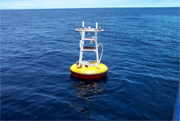Australia

- © UNESCO
Australia joined the Organization on November 4, 1946, among the first Member States to do so. It is covered by the UNESCO office in Apia (Samoa).
Australia has been involved recently in establishing the Indian Ocean Tsunami Warning System (IOTWS). The Secretariat for IOTWS is based in Perth, Western Australia, where the first meeting of the Intergovernmental Coordinating Group for the System was held in August 2005.
One international network and six UNESCO Chairs have been founded in the country. Most recently (2007), the UNESCO/Cousteau Ecotechnie Chair in Antarctic and Southern Ocean Environmental Sciences was founded at the University of Tasmania.
Examples of capacity-building in the natural and basic sciences, another important area of cooperation, include the Pacific Science Exchange facility, strengthening science-education-media links. HELP is a hydrological research project such studying water catchment areas to help develop community participation in water management.
Conservation of biodiversity is ongoing at 14 MAB biosphere reserves; Australia is also helping prepare international guidelines for the protection of sacred natural sites within these reserves. Similarly, Australia is involved in a range of activities promoting the 1972 World Heritage Convention. With the latest addition, the Sydney Opera House (2007), there are 17 World Heritage Sites across the continent.

